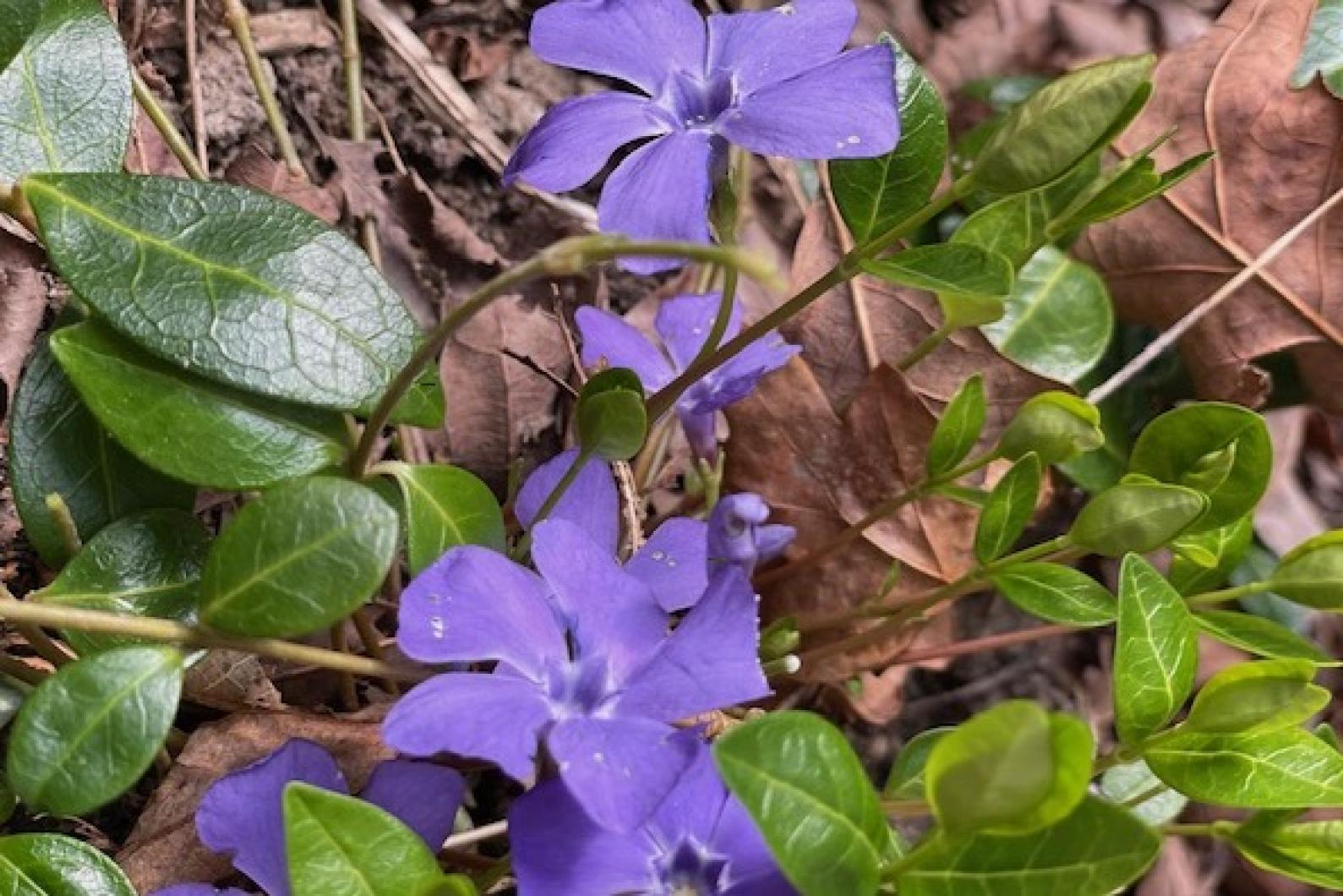Julius Caesar’s most famous quote (which actually ends with the word “vici,” so forgive the poetic license) means “I came, I saw, I conquered.” The same might also be the motto of that ubiquitous ground dominating plant, vinca.
And though the victors get the spoils, there is only so much you can do with vinca. A lot, I’d say, but my favorite — consuming wild plants — would not work for this one. You would have to be crazy to eat vinca, or maybe just desperate.
Desperate for healing, for life and for love; since vinca can do much good, but can also be toxic and even deadly in large amounts. Vinca has a history of both heartening and harrowing body and soul. In love and in health, this plant provides promise, though it also has associations with death.
Hailing from Europe, vinca has become naturalized in this country and is known for its purple-blue salverform flowers, evergreen leaves and tendency to take over, easily spreading with its stems rooting when they connect with the ground.
Its color not only brightens the early spring season, it also led to the naming of the color periwinkle. Periwinkle is an alias for this plant and also the name of a sea snail. The snail can take no credit for the color.
Originally called vincapervinca in the first century A.D. by naturalist Pliny the Elder, the word vinca breaks down to mean “entwine” or “bind,” and describes this plant’s twining nature. The connection with the shells seems to be simply coincidental, with pina being the name of the snail and wincel, meaning seashell, together creating a similar-sounding word that eventually became periwinkle.
The twisting quality of vinca provided for adornment and romance when it was used for love knots. The wedding poem, “Something old, something new, something borrowed, and something blue” has been interpreted by some to be speaking of blue periwinkle love knots that were wrapped around the bride’s thigh — think garter — to encourage a fertile union. Planting vinca in the garden was supposed to ensure a long and happy marriage.
Children would also sport crowns or wreaths of vinca “when deficiency of other flowers” limited their choice of headdress, Pliny wrote. Sadly, too, periwinkle crowns were made into garlands for the burial of children, as a symbol of immortality, flowers of heaven and of Jesus, Mary and angels above. Thus, it was common to see these flowers in old cemeteries, having been planted at gravesites and subsequently spreading.
Vinca was also employed to adorn the condemned: An English rhyme explained in old-fashioned spelling: “Crowned one with laurel leaves hye on his head set, other with pervink made for the giblet.” In this case, giblet means gibbet, or gallows.
Even with its links to death, vinca was believed to bring health, as long as you didn’t ingest too much of this toxic plant. Containing various healing alkaloids, it has been used historically (and currently) to relieve many ailments, including dementia. It is a sedative, astringent, antispasmodic, and hypotensive agent. Known to reduce or stop bleeding, it was employed for nosebleeds and heavy menstrual flow and to lower blood pressure. Stems, roots and leaves were all used, though the flowers were often left behind, as they quickly lost their potency after being picked.
Vinca or periwinkle held magic, too: It was known as the sorcerer’s violet. According to Pliny, carrying it was believed to lead to prosperity and ward off “dangerous beasts, poisonous snakes, terror, and evil spirits.” And for those with memory problems, it would restore remembrances lost to age or illness.
So much more than meets the eye; the lore and science of vinca, like the plant itself, covers a lot of ground.
Suzan Bellincampi is director of the Felix Neck Wildlife Sanctuary in Edgartown, and author of Martha’s Vineyard: A Field Guide to Island Nature and The Nature of Martha’s Vineyard.







Comments
Comment policy »